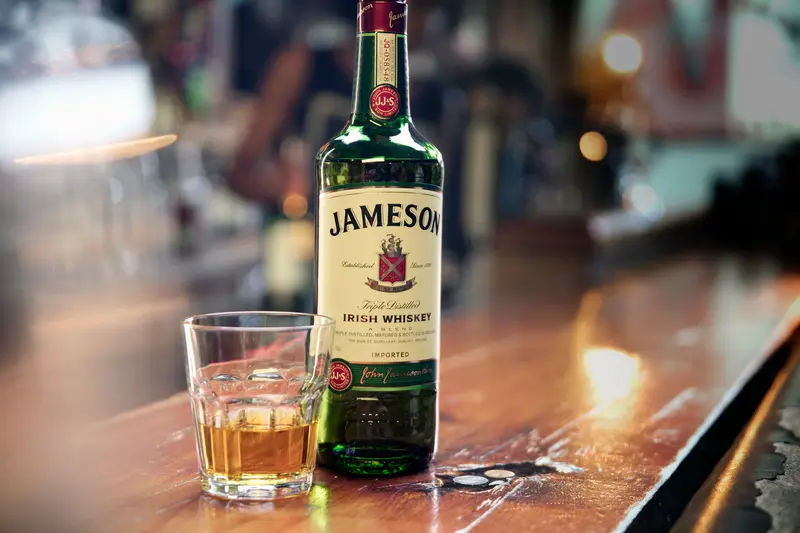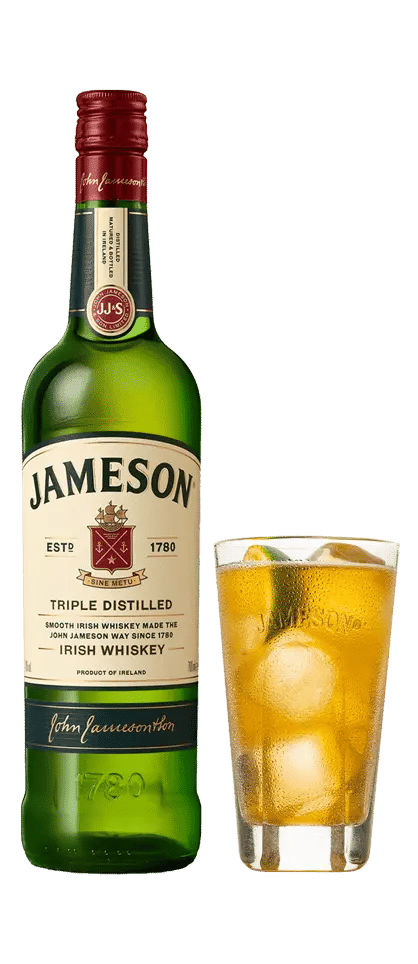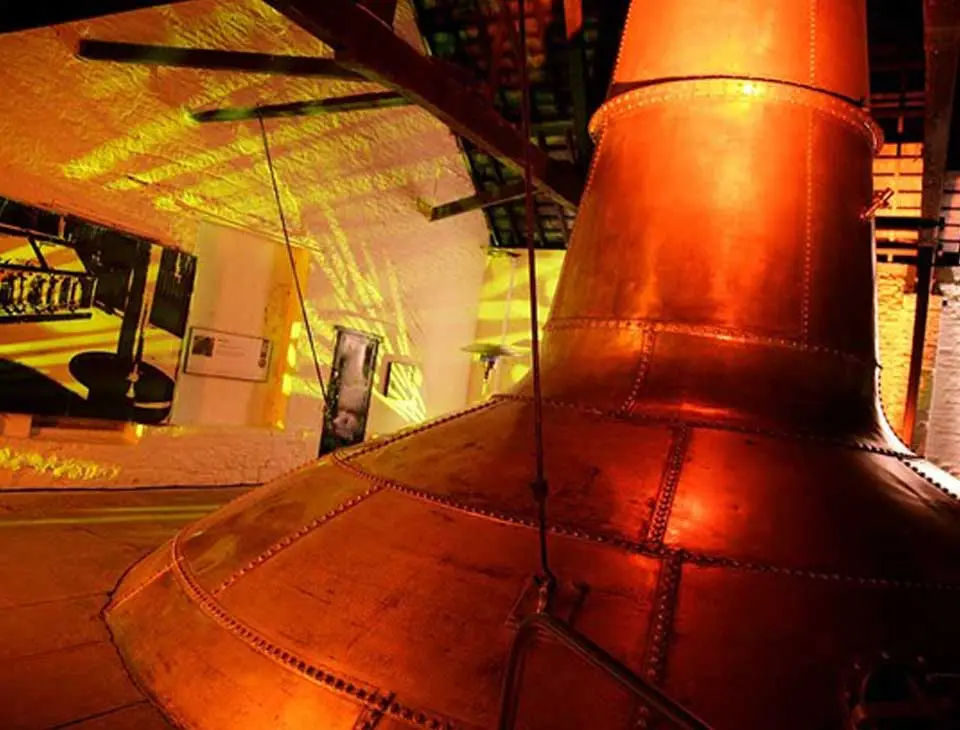
Teasing The Truth From Your Delicious Dram
How is Whiskey Made & the Whiskey Distillation Process
The essence of whiskey is found in its ingredients and Jameson Irish whiskey is no different. Understanding what whiskey is made of is crucial to appreciating the drink’s character. In this blog, we will guide you through the six steps of making Single Pot Still Irish whiskey, a style unique to Ireland that is considered the quintessential Irish whiskey.
For those curious about how Jameson brings its distinctive whiskey to life, “How is Jameson Made” offers an insider’s look at their unique approach of blending single-pot still whiskey with the finest grain whiskey.
Step One: Malting
Malted barley is modified barley. The malting process breaks down the barley’s starch content into simple sugars by encouraging the barley to grow and produce enzymes.
Barley is malted in 3 stages:
- Steeping involves soaking the barley in water to encourage growth. This tricks the barley into thinking it’s been planted, and thus, the grain begins the process of making its starch reserves available as energy to grow.
- Germination: The process of allowing barley to grow for several days, during which it produces all the enzymes necessary to convert its start into sugars and dry freely.
- Kilning: Barley is heated to finish its drying process. The hot air causes the barley to cease growth so that the sugars and enzymes remain in it.
Hot air is then blown up through perforations in the kiln floor to dry the barley, reducing its moisture level. Some distillers in Scotland burn turf or peat when kilning the barley to add a distinctive smoky or peaty taste associated with Scotch Whisky.

Step Two: Milling & Mashing
Now that the malting process is complete, the next stage of the whiskey-making process is to convert the barley’s sugar content into alcohol. This involves milling, mashing and fermentation. During milling, the unmalted and malted barley is ground into a fine flour called grist. The grist is mixed with hot water to create a mash with a porridge-like texture, but not a porridge-like flavour. Grist is great for making whiskey, but bad for making breakfast.
Mashing is when this milled grain is mixed with hot water for several hours. This facilitates the completion of the starch conversion process, during which any f the remaining starch content is are converted into fermentable sugars.
The mash, now rich in sugars, is filtered through a mash filter to separate the grist from the sugary water. The mash filter is a large structure containing numerous plates. One side of a plate acts as a sieve, while the other acts as a barrier. The mash is pumped between the plates, and pressure is applied to squeeze the mash against the filter sheet.
The sugar-rich wort liquid is collected, and the solid grain residue (or draff) is removed from the filter and sent to the feed recovery plant.
Step Three: Fermentation
The wort liquid from mashing is then pumped into large vessels known as washbacks, and yeast is added. As the yeast begins to consume the sugar in the wort, by-products are produced, including alcohol, carbon dioxide and flavour congeners.
Fermentation is complete after approximately 60 – 80 hours. The wort is now called wash and is approximately 10% alcohol by volume (ABV).
Now that alcohol has been created, the next step is to increase its strength. This is done by distillation.
Step Four: The Whiskey Distillation Process
Distillation in pot stills is particularly significant for Irish whiskey, such as Jameson, and involves multiple stages to refine the alcohol. Check out our blog for more on pot stills vs column stills.
The first distillation in the pot stills produces what is known as ‘low wines,’ with an alcohol volume (ABV) content of 25-40% . Much of the water remains in the pot at this stage, allowing for a concentration of flavours and alcohol in the subsequent distillations.
Each distillation is carefully controlled to extract the optimal balance of purity and flavour. The final distillate achieves a higher concentration of alcohol and a complexity of flavours that encapsulate the essence of the original ingredients.
The intricate dance between art and science in whiskey production—from the selection and treatment of grains to the precise distillation conditions—culminates in a spirit that is much more than the sum of its parts. It’s a celebration of tradition, craftsmanship, and the subtle nuances that make each bottle of whiskey a unique expression of its origins.
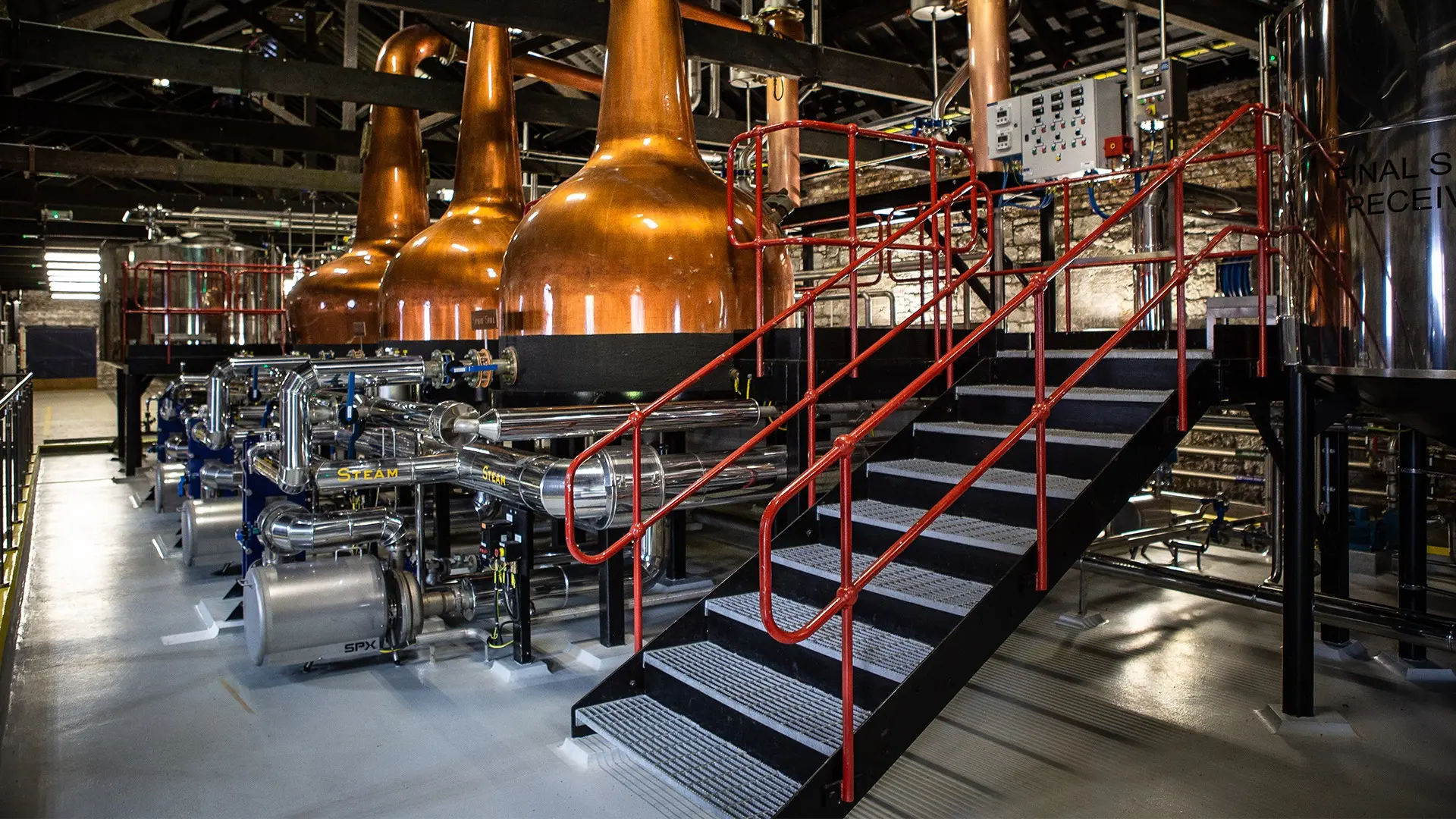
Step Five: Maturation
One of the most important contributions to flavour & aroma comes from the wooden casks in which the spirit is stored. The clear spirit that enters the barrel, soaks up the colour and flavours of the wood, slowly turning into (not so clear) whiskey.
Step Six: Blending
Once the pot still whiskeys have matured for many years in oak casks, the whiskey blender has two options:
1. Bottle the whiskey as a single pot still Irish whiskey
2. Blend the whiskey with grain or malt whiskey to create a blended Irish whiskey.
A certain number of the casks will contain pot still whiskey, while others will contain grain whiskey. The Master Blender will then blend the two styles of whiskey to create a harmonious balance between the rich, spicy and robust characteristics of the pot still whiskeys and the more floral and fragrant notes of the grain whiskeys. It takes decades of practice to become a master blender, and we’re lucky to have some of the best blenders in the world working on Jameson Irish Whiskey.
Step Seven: Bottling
As the final step in a lengthy process, bottling must reflect the skill, craft, and creativity that have gone into the whiskey production.
The bottling process involves depalletisation, rinsing, filling, capping, labelling, case packing, sealing, weighing and palletising. Once bottled and labelled, the whiskey is shipped to be enjoyed by consumers worldwide.
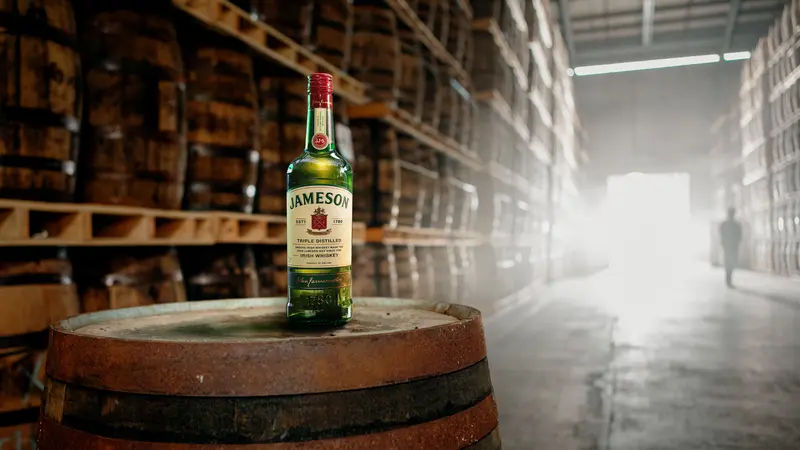
What is Whiskey Distillation?
The distillation process is a pivotal stage in whiskey production as it elevates the alcohol content. This crucial step transforms the fermented liquid into a vapour by heating it. It then condenses this vapour back into liquid form, effectively concentrating the alcohol. The magic (it’s actually science, but it’s pretty magical science) of distillation unfolds in a device famously known as a still.
Two primary types of stills are employed in the distillation process: pot and column stills.
Those interested in witnessing this process first-hand and exploring the art and science behind whiskey production have a unique opportunity to see the Jameson experts in action by visiting our distilleries, be it Jameson Distillery Bow St. or Midleton Distillery Experience.
What is Whiskey Fermentation?
Fermentation is a critical stage in whiskey production, marking the start of alcohol formation and flavour development. This process transforms sweet wort into a potent wash, driven by the essential role of yeast. Yeast consumes sugars from the mash, turning them into alcohol and carbon dioxide while introducing flavour compounds like esters, aldehydes, and acids.
The choice of yeast, fermentation temperature, and duration influence the whiskey’s final taste, adding complexity that evolves further during distillation and ageing. Fermentation is essential not only for alcohol content but also for establishing the whiskey’s unique character and depth of flavour, setting the foundation for its maturation into a cherished spirit.
More on Whiskey Distillation
What equipment is needed to distil whiskey?
The essential equipment for distilling Jameson whiskey includes a pot still or column still for alcohol separation, and producing spirit. Then we mature this spirit in seasoned oak bourbon barrels and seasoned sherry casks. Over time the spirit soaks up the flavours and colours of the wood, resulting in the beautiful amber colour and exquisite flavours Jameson is known for.
Is there a different whiskey distillation process for Irish Whiskey?
Irish whiskey has distinct characteristics; one key difference is that it is typically triple-distilled resulting in an exceptionally smooth whiskey. This is why all Jameson whiskeys are triple-distilled, so smoothness is guaranteed.
How much time does whiskey spend between distillation and bottling of whiskey?
The time whiskey spends between distillation and bottling varies significantly depending on the type of whiskey and the regulations governing it in its country of origin. In Ireland, whiskey must be aged in wooden casks for at least three years to be labelled as such. This is the minimum for Irish whiskey, but maturing whiskey can last for much… much longer. Our Jameson 18 Years is matured for… you guessed it, 18 Years!
How long does it take to make whiskey?
How long is a piece of string? The total time from the beginning of production until the whiskey is ready to be consumed can vary widely depending on the specific product and the distiller’s desired characteristics.
For Irish whiskey, there is a minimum requirement to age whiskey for 3 years, however at Jameson, we tend to age whiskey to around the 4-year mark before blending and bottling. Tennessee whiskey has no such requirement and can be made in a shorter timeframe.
The malting process is important too. It takes time to malt the barley used in Jameson, however, not all whiskeys are made with the same cereals. Depending on which cereals are used to make a whiskey, the preparation time might vary.
And of course, Jameson is triple-distilled where other whiskeys are not. Sure, it takes a little extra time, but that’s the price we must pay to produce incredibly smooth whiskey. Worth it? Oh yes, definitely worth it!
Whiskey-Tasting Glasses
Experience the culmination of tradition, skill, and passion in every bottle of Jameson Irish Whiskey. Join us in celebrating the rich and robust flavours that make Jameson not just a whiskey but a journey through the essence of Ireland itself.
